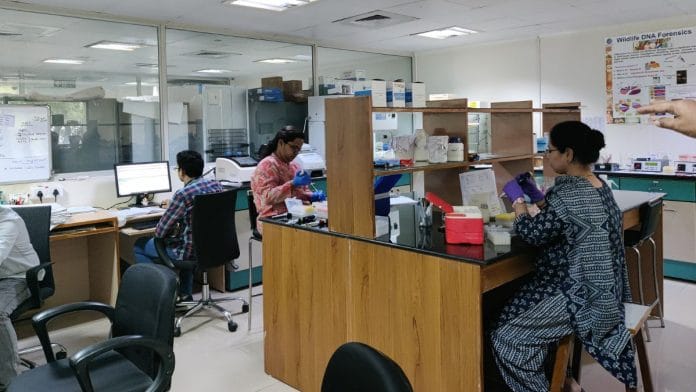Hyderabad: All it took was a few drops of blood to put a poacher behind bars. In Odisha’s Mayurbhanj district last year, forest officials caught a man red-handed with ivory tusks, but had no way to prove he had killed an elephant. Then they spotted the blood on his shirt.
A team of forensic scientists analysed the stains. DNA testing showed a match between the blood and the tusks—and the poacher was arrested.
“The difference between human and wildlife DNA forensics is at least we know that humans are all the same species,” laughed Vinay Nandicoori, director of the Centre for Cellular and Molecular Biology (CCMB), Hyderabad. “With wildlife, the challenge is to identify what species, what genus, what breed this animal belongs to from just a few specks of DNA.”
That’s where Universal Primer Technology (UPT) comes in. Think of it like a DNA barcode reader. Even the smallest traces of biological samples can be identified. This year marks 25 years since two Indian scientists — late Sunil Verma and Lalji Singh — developed the DNA technology at CCMB.
The impetus was the infamous Salman Khan blackbuck poaching case of 1998. Verma was a scientist at the Centre for DNA Fingerprinting and Diagnostics and helped establish through DNA testing that the carcasses found by the Rajasthan forest department belonged to blackbucks. Two years later, he moved to CCMB and began working on UPT with Singh.
Today, UPT is the global gold standard in wildlife forensics. Patented in 12 countries, it revolutionised how India, and the world, approaches wildlife crime.
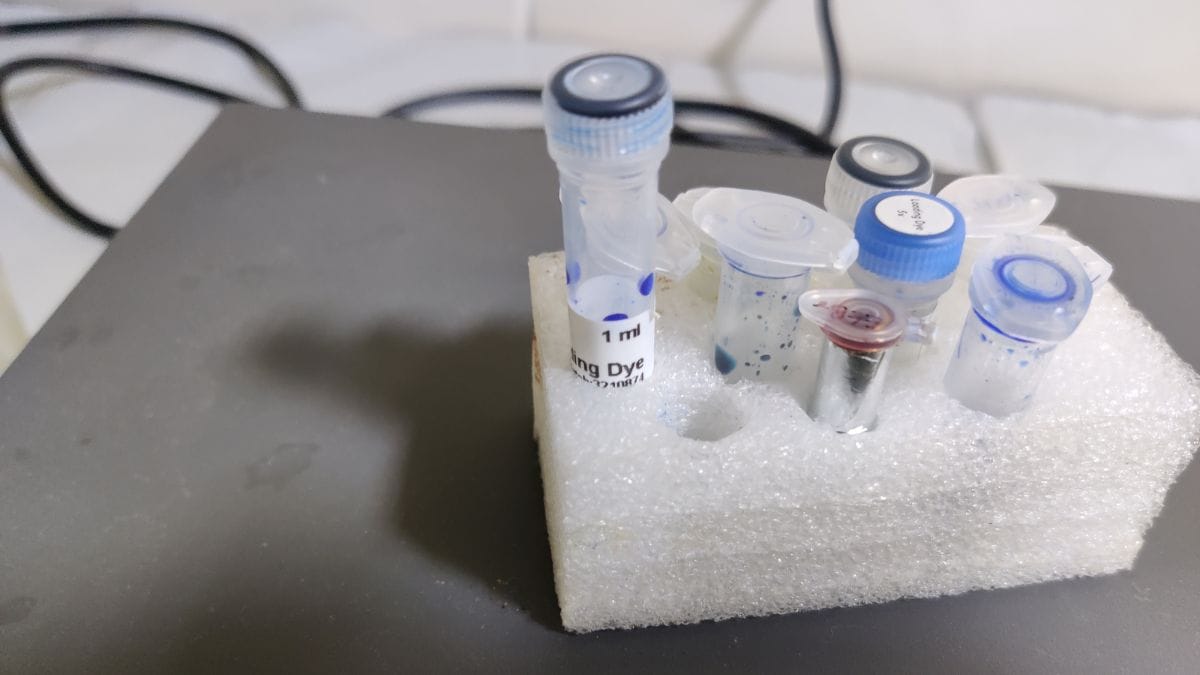
CCMB scientists are now identifying regional genetic markers in wildlife. This could allow the repatriation of trafficked live animals to their original habitats. Their latest arsenal is environmental DNA, or eDNA, which identifies all life forms in a region by analysing soil and water samples. This could change both wildlife crime investigations and conservation science.
“It is because of these advances in wildlife forensics that India’s track record on cracking wildlife crime is now at par with the globe,” said Keshav Kumar, retired IPS officer and wildlife crime consultant to the Assam government. “I always say the best prosecution is itself a form of conservation.”
Also read: Pashmina or shahtoosh? Hyderabad’s CCMB just developed the first-ever DNA test
From Indore highway to Hyderabad lab
In April this year, the Madhya Pradesh State Tiger Strike Force (STSF) flagged down a truck on the Indore–Mumbai highway in Mau. Inside, they found what the drivers claimed was goat meat.
“We thought it was bushmeat, maybe deer,” said STSF officer Ritesh Sarotia. “But forensic analysis told us it was actually blackbuck. That is a Schedule I protected species.”
At CCMB’s Wildlife Diagnostics Lab, led by Dr Ajay Gaur, this case was relatively straightforward.
“We don’t often get fresh samples of meat or flesh, which is easy to identify. The real challenge is when it is something completely random like bones, a dried blood stain on leaf or a weapon, some whiskers or even snake venom,” said Gaur.
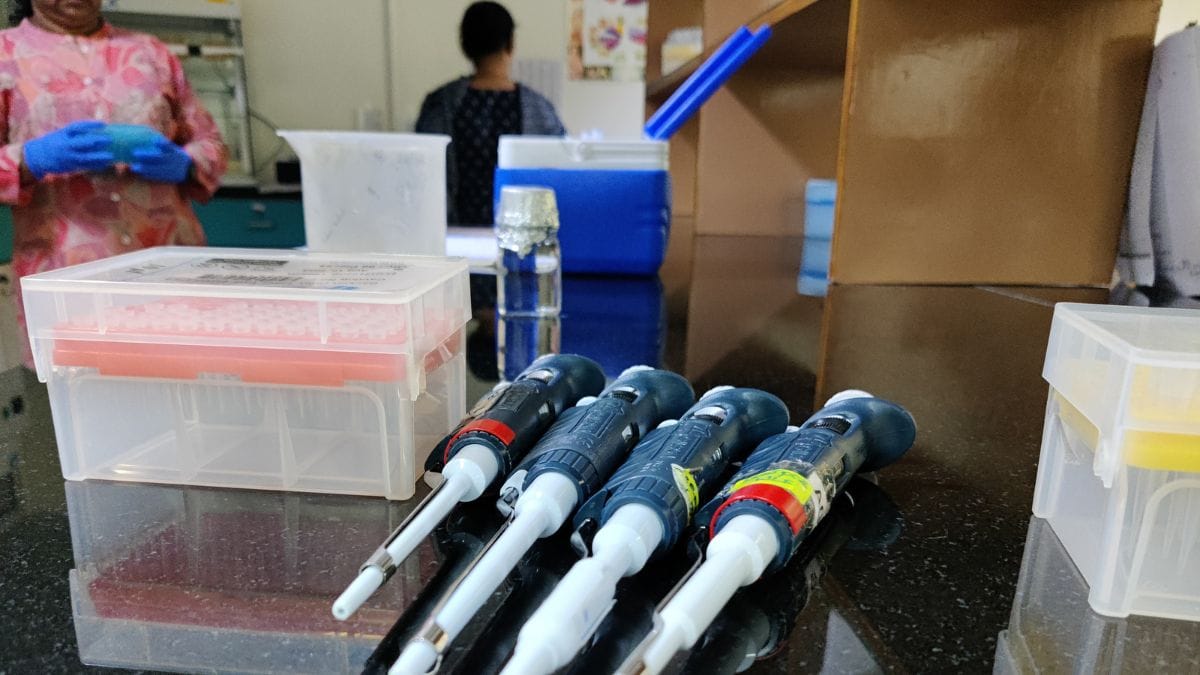
He recalled a 2004 poaching case where DNA had to be extracted from a chopping board. Wildlife authorities had arrested a serial poacher who was cooking meat.
“The DNA of the meat in the pressure cooker revealed it was chicken, but when the remnants from the chopping board were analysed, it was found to be was peafowl [a protected species],” explained Gaur.
Also read: Hyderabad’s CCMB was called Sheraton of science labs. MF Husain was its artist-in-residence
The science behind the breakthrough
Under the UPT — developed by Lalji Singh, a former director of CCMB and popularly known as the ‘Father of Indian DNA fingerprinting’, and Sunil Verma — a strand of mitochondrial DNA is identified through a unique sequence that differs from species to species.
“It is called ‘universal’ because the same set of primers can be used to identify DNA from birds, insects or mammals,” said Swati Chauhan, a project scientist at the lab. “Once we isolate that sequence in a DNA sample, we can match it with a global and in-house [DNA] database to accurately identify the species.”
When Singh and Verma proposed the technology in the late 1990s, the landscape of DNA forensics in wildlife crime was a little scattered. Labs relied on morphological analysis — where physical attributes are used to recognise the species — or chemical testing of bile and blood samples collected in poaching cases, but neither method was conclusive. DNA changed the game.
“It is still difficult because we’re never lucky enough to get intact, fresh samples,” said Chauhan. “We get cases that are 10-15 years old, where samples are very old and haven’t been preserved properly.”
In the basement of the CCMB’s annexe building is a sanitised room that looks like a coroner’s office in a murder mystery film. A granite slab in the centre acts as the ‘operating table’ where samples are unpacked. Next to a ledge is the biosafety cabinet — stocked with rubber gloves, sanitisers, and rubbing alcohol — which has been engineered to protect its users against harmful particles that could emerge from samples.
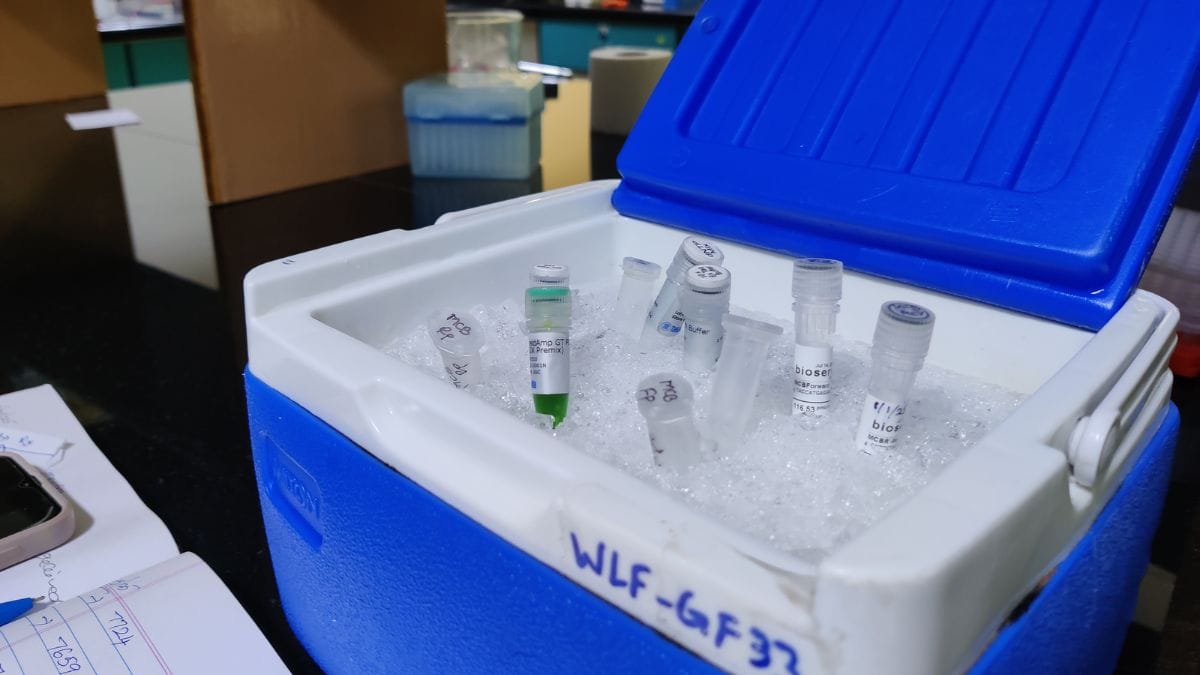
“With animal samples, there’s the threat of zoonotic diseases, so whenever we’re opening them, we take a lot of precautions,” said Gaur.
Once opened safely, the team cross-checks the size, number, and type of samples with the information in the case sheet. If seized by forest, wildlife, or police officials, the samples would usually be blood, meat, skin, fur, or bones. Samples sent by customs are often finished products like shoes, trophies, shawls, and ivory bangles and articles.
Samples are cleaned in solutions to remove additives like table salt used by field officials during storage. Then they are chopped into pieces to extract and isolate the DNA.
“Once we have the desired DNA, we amplify it in a PCR machine using Universal Primers,” said Dipanvita, another project scientist. “This primer attaches to and amplifies one particular unique section of the mitochondrial DNA, which then leads us to identify the species.”
Essentially, explained Dipanvita, the DNA from a sample is too minuscule to study and so the PCR machine helps amplify it into a million copies.
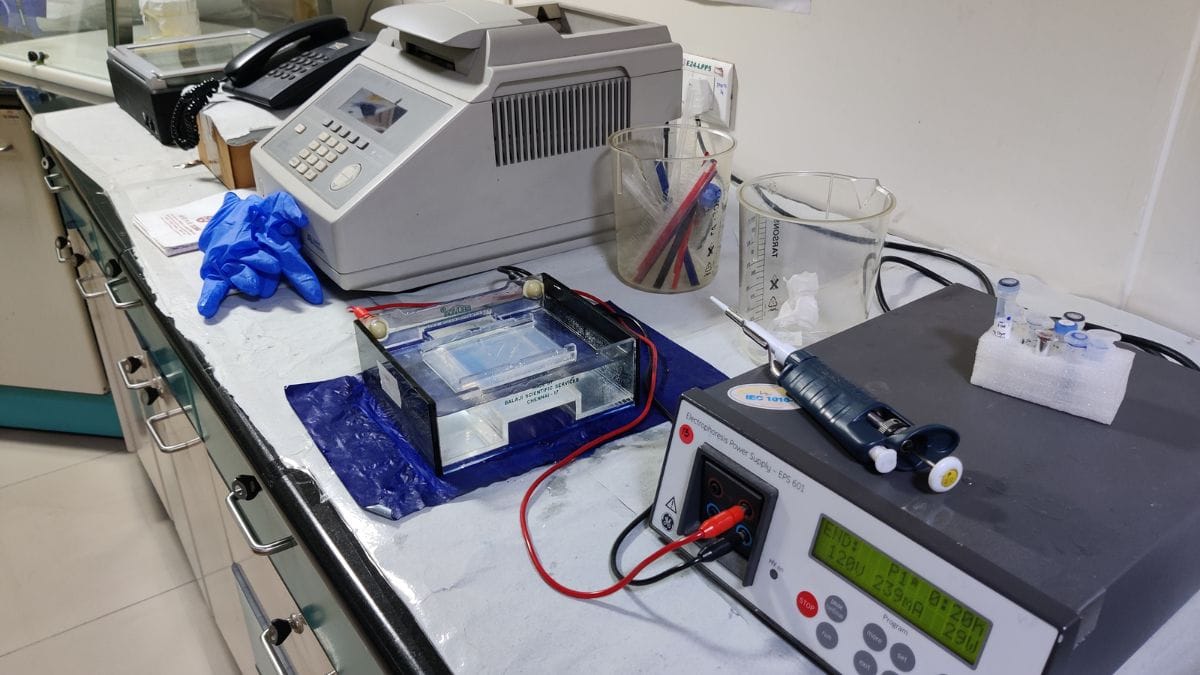
Also read: Armed with DNA, scientists find 1857 war link to skeletons discovered in Punjab well in 2014
From species ID to regional tracing
Gaur, who has been with the CCMB for as long as the technology has existed, credits Singh and Verma for the advances his team has been able to make in DNA forensics. Over the past few years, his team of scientists has been working not just to identify species but to trace the region an animal comes from.
“We don’t just deal with wildlife crime and poaching cases, but also a number of internationally trafficked animals,” said Gaur. “Wouldn’t it be great if we could pinpoint which country and which geographical region they originate from? It would be a huge step in wildlife repatriation.”
To detect the region, CCMB scientists rely on the same DNA technology. But here, they are looking at microsatellite DNA markers that can distinguish between individual animals of the same species.
“We have used it before in local wildlife cases. Sometimes when officials find a few pieces of bones or whiskers and claws, they want us to determine whether they’re from the same or different animals,” said Gaur.
According to Sarotia, this helps determine the extent and seriousness of the crime.
“Whether it’s one tiger or two tigers, the poacher will be charged with the same law. But if it’s multiple tigers, we’re able to tell that this is a more serious offence, and often it leads us to links with other poachers,” said Sartoria.
Back in 2005, Gaur’s team used microsatellite markers to repatriate 1500 endangered star tortoise seized by Singapore airport authorities. By analysing genetic variations, they identified whether the tortoises came from southern India or western India.
To do that, they first had to build a reference database by collecting samples from all regions.
“There were markers and variations in the DNA that we could identify without sequencing the entire mitochondrial genome of the star tortoise,” said Gaur. “Then we thought that if we do decide to sequence it, for other species, it would give us a whole host of new information.”
Since 2016, Gaur’s team has also been sequencing the entire mitochondrial genome of endangered species like the Indian mouse deer, Asiatic lion, Asian palm civet, and clouded leopard.
This mithochondrial genome sequencing provides information about the genetic and evolutionary history of a particular species, allowing scientists to tell how animals from different regions vary genetically and at what point did the variation occur.
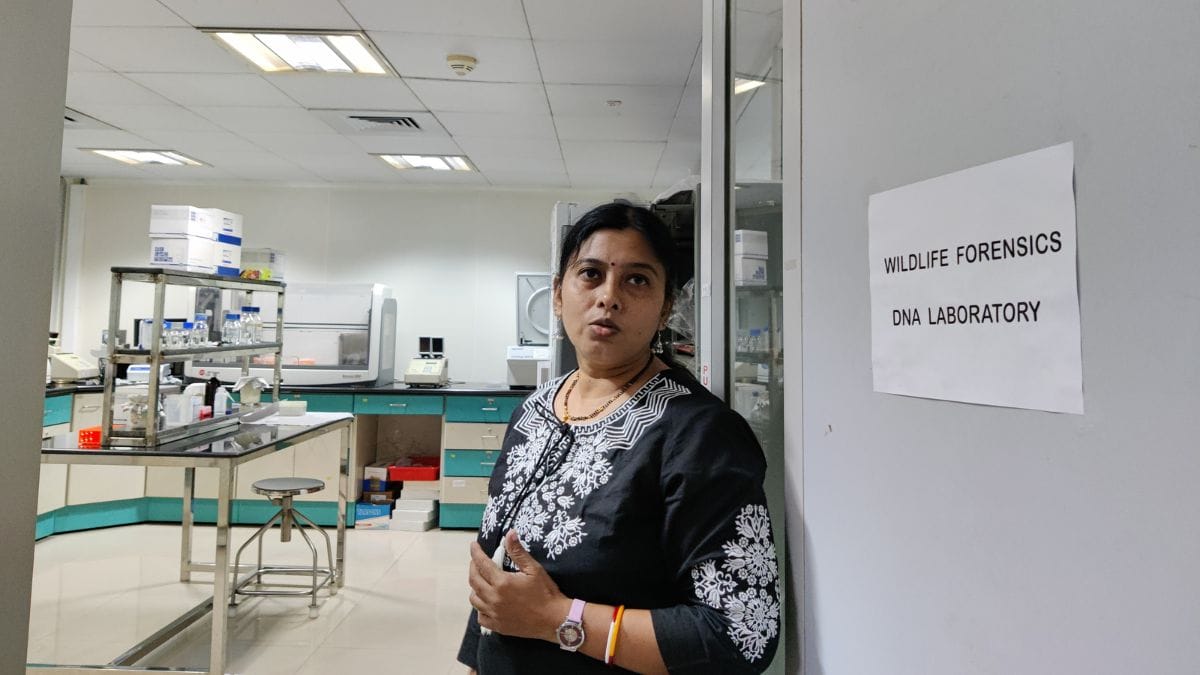
To be able to repatriate trafficked animals, along with genome sequencing, scientists would also require DNA samples of all regional variations of the animals – to build a database and match the trafficked animal’s DNA with it. That is what the team is currently working on.
“It takes time, but this information is crucial for wildlife conservation,” said Gaur. “We don’t want our efforts to be limited to sampling and identification, because DNA can do so much more. It is the key to not just Indian but global conservation efforts.”
A legacy with global impact
The CCMB campus in Hyderabad is replete with tributes to Singh and Verma’s contributions to Indian wildlife forensics, but their impact goes far beyond India.
Keshav Kumar, who led the investigation into the 2007 Gir lions poaching case, said CCMB’s work made India a global name in wildlife protection.
“I have given talks in London, Singapore on wildlife conservation and the importance of upholding CITES Act, and everywhere there’s mention of CCMB and their pioneering research,” he said. “Now, there are other institutes like the Forest Research Institute and the Wildlife Institute of India [both in Dehradun]. But CCMB was the first.”
Govindhaswamy Umapathy, Chief Scientist and head of the Laboratory for Conservation of Endangered Species (LaCONES) at CCMB, said the institute prides itself on leading research, not just following it.
“We are always working on cutting-edge research,” he said. “Once we’ve established some findings, we hold workshops for other scientists, and we immediately share this knowledge with them,” he added.
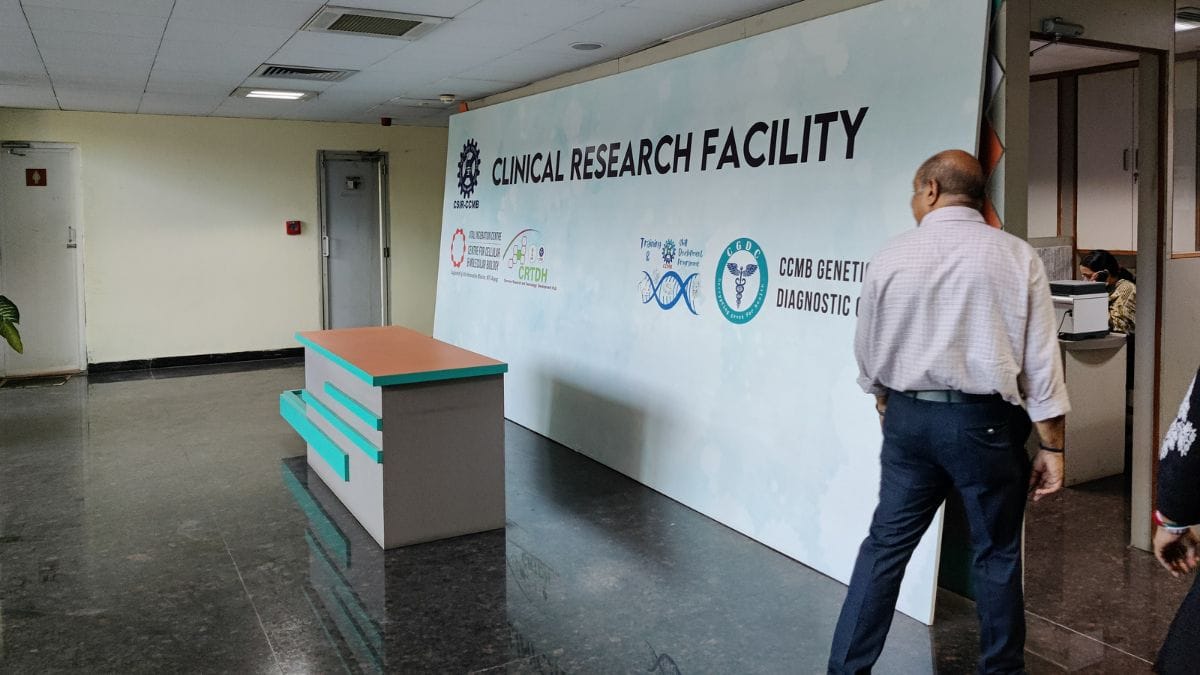
Umapathy’s latest project involves environmental DNA: collecting air, soil, water, even biofilm samples to determine which species of viruses, bacteria, mammals and other living beings exist in that region. His team is collaborating with the Ministry of Earth Sciences’ Deep Ocean Mission, preparing to study a water sample from 5,000 metres deep in the Indian Ocean.
“All of this has emerged from Verma and Singh’s DNA Universal Primer technology,” Umapathy said. “That’s the foundation of all the work we have been able to do in this institute.”
(Edited by Prashant)



